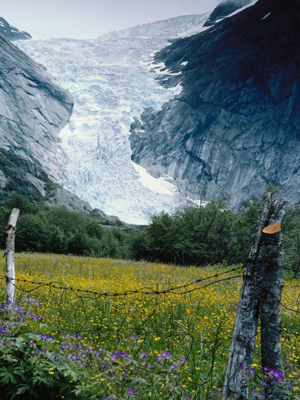
Glaciers
and ice sheets
Glaciers are large, thickened masses of ice, which accumulate through snowfall
over long periods of time. The thickness of the ice depends on how much snow
falls during the winter months, how much ice melts during the summer months,
and how the ice moves.
Ice caps and ice sheets are bodies of ice that cover a large area of land. When the ice masses reach a critical thickness, they begin to move, or flow outward in all directions. Ice caps typically form in high altitudes, such as on mountain tops. There are currently two ice sheets on Earth, one on Greenland and one in Antarctica. About 75% of the world’s fresh water is stored in glaciers and ice sheets.
Changes in the polar climate will have a direct impact on the great ice sheets, ice caps, and glaciers of the polar regions. How each responds will depend on several climatological parameters; some will grow, whereas others shrink.
